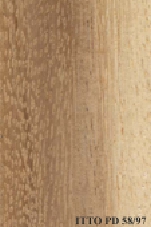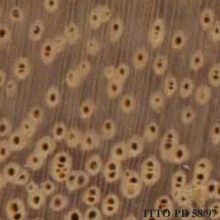
SAMáN (Pithecellobium saman)
Trade Name
Samán
Scientific Name
Pithecellobium saman (Jacq.) Benth.
Family
LEGUMINOSAE
Common Names
Gipio (Brazil); Saman (Ecuador); Samán (Colombia); Saman (Colombia); Samán (Venezuela); Samag; Monkey Pod; Locorice; Lara; Huacamayo Chico (Peru); Guango; Gouannegoul; Giant Tibet; French Tamarind; Dormilón; Cow Tamarind; Carreto; Carabali; Campaño; Arbre A Pluie; Algarrobo; Genizaro; Zorra; Garreto; Saman (Venezuela); Rain Tree; Cenicero; Algarrobo Del País (Cuba)
Scientific Name Synonyms
Samanea saman (Jacq.) Merr.; Mimosa saman Jacq.; Inga saman (Jacq.) Willd.; Enterolobium saman (Jacq.) Prain ex King; Calliandra saman (Jacq.) Griseb.; Albizia saman (Jacq.) F. Muell.; Acacia propinqua A. Rich.
Description Of The Tree
Botanical Description
The trees are reported to be large, reaching heights of up to 40 m, with trunk diameters of even 150 cm. The boles are straight and cylindrical, with commercial lengths of about 30 m.
Natural Habitat
Pithecellobium saman is found in tropical dry forests, growing at low elevation areas.
Natural Distribution
Species in this group are reported to occur in Central and South America.
Wood Identification
Anatomic Description Of Wood
Vessels per mm2 less than 6 (rare). Occasionally vessels in dendritic pattern. Colored deposits in heartwood vessels. Tangential diameter of vessel lumina 200 micras or more (large). Paratracheal axial parenchyma scanty and/or vasicentric. Axial parenchyma lozenge-aliform. Axial parenchyma confluent. Axial parenchyma in marginal or in seemingly marginal bands. Prismatic crystals in the ray cells.
-
 Wood Macro Photo Tangential Plane
Wood Macro Photo Tangential Plane
-
 Wood Micro Photo Of Transversal Section
Wood Micro Photo Of Transversal Section
Availability
Cites Status
Unrestricted
General Wood Description
Odor
Seasoned wood has no characteristic odor or taste.
Color
The sapwood is pale yellow, the heartwood is dark brown color.
Grain
Straight or interlocked grain is common in this species.
Texture
This species is usually reported to have a coarse texture.
Luster
Luster is moderate to high.
Natural Durability
This species is resistant to termites attack. It is rated as very durable against both white and brown rotting fungi.
Natural durability index (1= Very high durability, 7=Vey low durability)
4
Wood Physical Properties
Basic Density or Specific Gravity (O.D. weight/vol. green) (g/cm³)
0.49
Air-dry Density (Weight and volume at 12%MC) (g/cm³)
0.53
Total shrinkage Tangential (Saturated to 0%MC) (%)
3.8
Total shrinkage Radial (Saturated to 0%MC) (%)
2.2
Drying Defects
Ease of Drying: It is reported to be easy to air season, drying is rapid and uniform. Drying Defects: Slight tendency to checking and moderate warping. Kiln Schedules: Slow drying is recommended.
Recommended Dry Kiln Schedule
JUNAC-B
Dimensional stability ratio (Total Tangential Shrinkage %/Total Radial Shrinkage %)
1.7
Wood Chemical Properties
Wood Mechanical Properties
Bending Strength (MOR),12%MC (kgf/cm²)
623
Stiffness (MOE) 12%MC (kgf/cm²)
77000
Janka hardness (side) 12%MC (kgf)
386
Janka hardness (end grain) 12%MC (kgf)
408
Workability
Sawing
Sawing of this species is easy.
Machining
Machining operations are good, but when interlocked grain is present, woolly surfaces are observed.
Planing
When interlocked grain is present, woolly surfaces are reported after planing.
Sanding
Wood of this species is easy to sand.
Finishing
It takes an excellent finish.
REFERENCED USES
End Uses Summary
EXTERIOR GENERAL, HOUSING GENERAL, beams, joists, panelling, fittings, FURNITURE AND CABINETS, PLYWOOD AND VENEER, faces, decorative
Exterior General
- 1 - Tabela de resultados de ensaios fisicos e mecanicos
General Housing
- 10 - Silica in Timbers
Beams
- 11 - Prospect: The wood database
Joists
- 12 - Tropical timbers of the world. Part I-Tropical American Species
Paneling
- 18 - W3TROPICOS Missouri Botanical Garden
Fittings
- 19 - Silica in Timbers
Furniture Cabinets
- 21 - Tropical timbers of the world. Part III-Southeast Asian and Oceanian Species.
Panels, Veneers
- 25 - Directory of Timber Trade Malaysia
Faces
- 26 - Annual Review and Assessment of the World Timber Situation 1998-ITTO
Decorative veneer
- 28 - Ministry of Agriculture, Fisheries & Forest of Fiji
Please Provide Information To View Producer Information